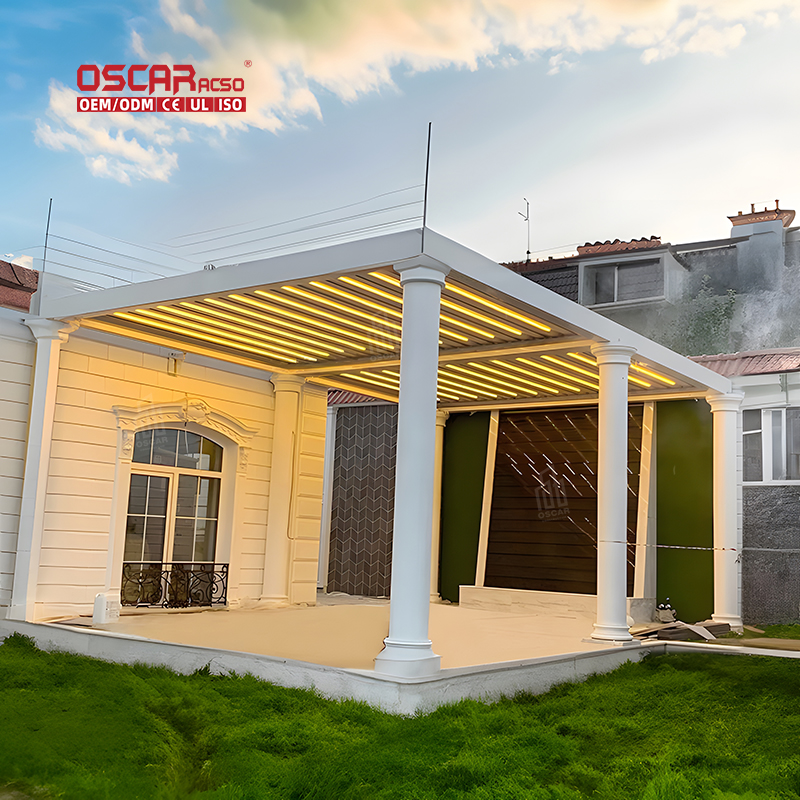Where Did Pergola Come From, Uncovering Its Ancient Garden Secrets
The pergola, an iconic structure in modern landscapes, has a rich history that spans thousands of years and multiple...

The 涼亭, an iconic structure in modern landscapes, has a rich history that spans thousands of years and multiple civilizations. Its journey from practical shade provider to stylish outdoor living space reveals a fascinating evolution in design and function. Let’s explore where it all began.
🌍 Ancient Origins: More Than Just Shade
The concept of the pergola dates back to ancient Egypt, where evidence suggests vine-covered wooden structures were used to create shaded areas in gardens and courtyards. These early designs provided respite from the intense sun and were primarily enjoyed by the elite. The Romans and Greeks later adopted and refined this idea, building pergulae (the Latin term) in wealthy villas and public spaces. These structures supported climbing plants like grapevines, created shaded walkways, and added beauty to courtyards.
In Persia and Islamic gardens, shaded arcades and pavilions echoed the pergola’s structure, emphasizing symmetry, water features, and serenity. These designs influenced Ottoman and Moorish architecture, becoming central elements in palace courtyards.
🏛 The Roman Innovation: Blending Function and Beauty
The Romans were true masters of integrating architecture with nature. Their pergulae served multiple purposes:
- •
Supporting vines: Primarily for grapes, which provided both fruit and shade.
- •
Extending living space: Creating cool, shaded areas for relaxation and social gatherings.

- •
Demonstrating mastery: Showcasing the blend of structured architecture with the cultivated natural world.
Roman gardens were essentially outdoor living rooms, and the pergola was a key feature in these spaces. Its utilitarian yet elegant design laid the foundation for the pergola’s future evolution.
.jpg)
🎨 Renaissance Revival: From Utility to Artistry
After the decline of Rome, the pergola’s popularity waned in Europe. Its grand revival came during the Renaissance, particularly in Italy. Gardeners and architects, inspired by classical ideals, reinstalled pergolas in grand estates. During this period, the pergola transformed into a more ornamental and elaborate structure, symbolizing status and refined taste. It became a centerpiece in the lavish gardens of the wealthy, reflecting the era’s emphasis on art, symmetry, and landscape design.
🌿 Global Adaptations: Similar Concepts Across Cultures
The core idea of a shaded structure isn’t unique to Europe. Many cultures developed similar concepts independently:
- •
Egypt & Persia: Featured covered walkways and trellises for sun protection.
- •
Asia: Japanese garden gates and shaded pavilion walkways, though culturally distinct, shared the functional principle of defining space and providing shelter.
This global parallel development highlights a universal human desire to shape nature for comfort and beauty.
🏡 The Modern Pergola: Innovation and Luxury
Today’s pergolas blend ancient charm with modern technology. They’ve evolved into versatile outdoor fixtures, thanks to:

- •
Advanced materials: Aluminum, vinyl, composite wood, and glass offer durability and style.
- •
Smart features: Motorized louvers, LED lighting, and rain sensors enhance functionality.
- •
Design diversity: From traditional wooden structures to sleek, modern aluminum designs.
Modern pergolas are no longer just garden accessories; they’re luxury features that extend indoor living outdoors, creating seamless transitions between inside and outside spaces.

💡 Why the Pergola Remains Timeless
The pergola’s enduring appeal lies in its unique blend of form and function. Unlike a solid roof, it creates a dynamic, living space that changes with the seasons. It allows sunlight to filter through, air to circulate, and plants to intertwine with architecture. This connection to nature is what makes pergolas so special.
My personal take? The pergola is one of the most successful translations of ancient architecture into modern living. It proves that the best designs are those that connect us to our environment, not separate us from it. Its journey from Roman vineyards to suburban backyards shows how a good idea, rooted in simple human needs, can truly stand the test of time.

